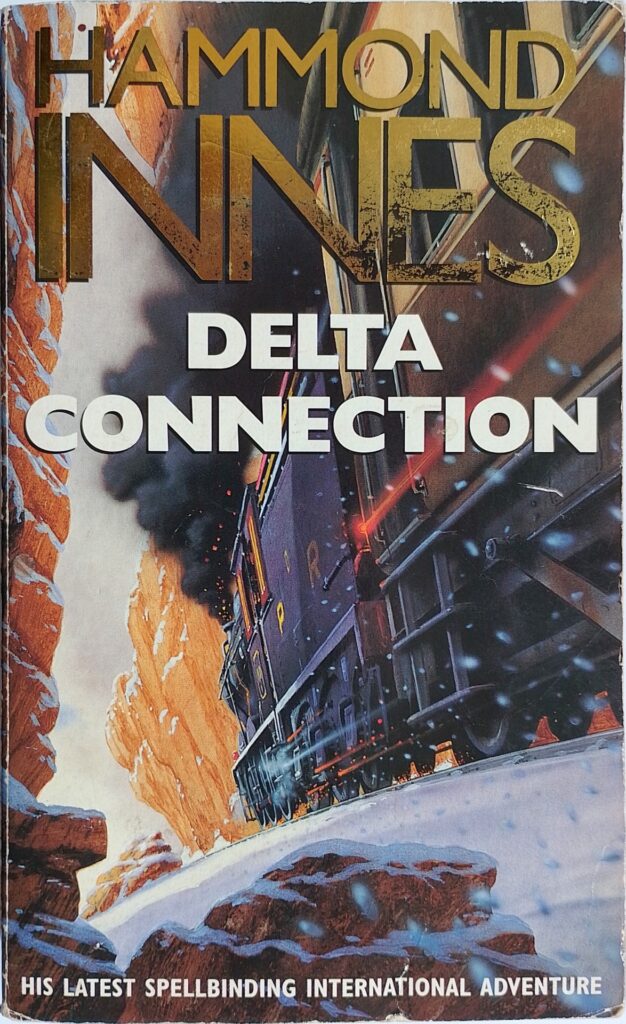First published 1996. Pan, paperback, 1997, pp 437, c.120,000 words.
Innes was around 83 when this, his last book, was published – the last of thirty books of fiction and three of non-fiction. It contains much that is familiar from his earlier thrillers, with taut writing, high adventure and exotic settings, as well as some involvement in current affairs. However the plotting is much rougher than everything else of his I’ve read.
I had the impression that Innes had two events that he felt would provide suitable settings for his next thriller, and he couldn’t decide between them. The first was the fall of the Ceauşescu regime in Romania and the other was the aftermath of the withdrawal of Russia from Afghanistan (pre- 9/11). Perhaps sensing that he wouldn’t write another, he combined both settings in one story. This unfortunately leads to an abrupt change of tone halfway through the book and some mighty implausible reasons why most of the main characters from the first half all end up together again in the second half.
Another impact of shoehorning two stories into one is the abrupt gritty opening. Usually Innes starts with some innocent, dissatisfied in a dead-end job, to which something unexpected happens that sets the story in motion. In this case there is no preamble; we are straight into dissident Romania before the change of regime. The Securitate are calling on our hero’s friend and we are immediately into a bloody scene. The protagonist is a mining engineer – a very typical Innes type – but in this case he is a resource consultant working for a mysterious boss. He also happens to have a business degree and worked for a time in a merchant bank, oh, and by-the-way, he also speaks numerous languages including Romanian, Pashtun, French, and a smattering of Swedish.
While Innes tries to make this a contemporary story and the protagonist something like in his mid-thirties, some of his thoughts and activities speak of an older man or an earlier period than the mid-90s. Most of the other main characters ring more as caricatures rather than real people. There is the all-too-bluff British military-officer type, the smooth-talking Frenchman with an unerring ability to keep popping up, the hard, Afghan, war-lord types, the beautiful dancing girl, etc. There is a frankly ludicrous element of a lost tribe of Vikings that have somehow retained their culture over twelve-hundred years, living in a hidden valley high in Afghanistan. Oh dear, Innes is usually much better than this.
There are massive leaps in the plot when moving from one location to another. Mostly some bit of back-story is added to explain these away, but they left me feeling that this long book was unfinished. It is a great shame because Innes could have made two interesting books out of the rough material presented here. The ending is disappointingly inconclusive.
If you haven’t read any Innes before, don’t start here. I’ve enjoyed many of his other thrillers, finding them satisfying escapist stuff, with some real eye for detail and fine descriptive passages of exotic locations, and particularly of seascapes and voyages. There are only faint echoes of that talent here. The description of the reed-marshes of the Danube delta are particularly good, as are some of those of the awe-inspiring high mountains of the Hindu Kush.
© William John Graham, August 2022

